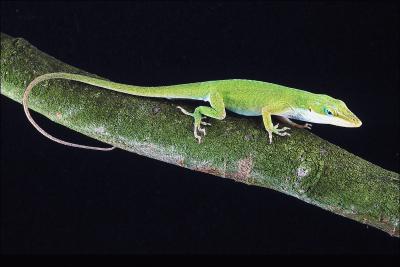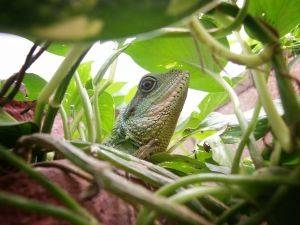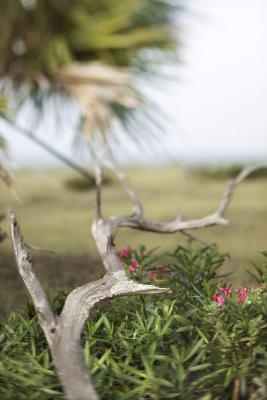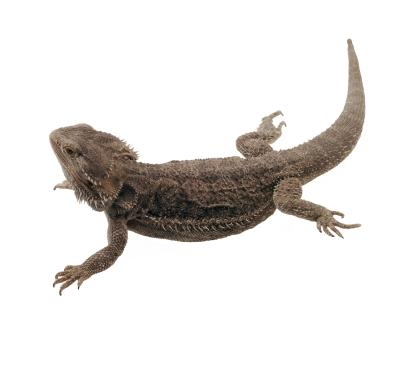
Green Anole Lizard Facts. The green anole is a diminutive member of the polychrotidae family of lizards. It is a widespread U.S. lizard species which has been introduced to some other areas of the world. This introduction has occurred mainly through the lizard's popularity as an exotic pet. It is a highly adaptable species and is a common sight within its range.

The green anole grows to between 5 inches and 8 inches in length and weighs less than 1/4 ounce. The female is generally smaller than the male and half of the lizard's total length is usually made up of its tail. The lizard's body shape is generally long and slender with a pointed snout and tapered tail. An anole lizard can be a vivid green color or a more drab gray to brownish color. The male has a pinkish flap of skin on its throat which can be opened out for threat and courtship display purposes.
The green anole is a neotropic species and is native to the southeastern U.S., as far north as North Carolina and west to Texas. Animals escaping from the pet trade and introduction as a pest exterminator explain why the lizard's range has extend to Hawaii, Japan, Guam, The Bahamas and Cuba. The species is highly adaptable and can be found almost anywhere with trees or large vegetation between 150 to 2,000 feet above sea level. It is one of the most common lizards found in suburban gardens within its range.
The lizard is an opportunistic omnivore, but feeds mainly on a variety of arthropods. Almost any insect small enough to fit in its mouth is a potential meal. Beetles, flies, spiders and mollusks are all common prey. A small amount of seeds and grains are also included in the lizard's diet. As the lizard has few natural defenses against predators, it falls prey to a large range of snakes, birds and other animals.
Females tend to mate with the same male time after time, but the males breed with multiple females within their range. During the spring and summer breeding season, females can produce a clutch of eggs every two weeks. Each clutch contains one to eggs with a female laying six to nine eggs per season. The eggs take five to seven weeks to hatch and the offspring are left to fend for themselves. Green anoles can live between two to eight years in the wild.
 How to Build a Lizard Terrarium
How to Build a Lizard Terrarium
How to
How to Build a Lizard Terrarium
How to Build a Lizard Terrarium
How to
 Green Anole Lizard Facts
Green Anole Lizard Facts
Green Anole L
Green Anole Lizard Facts
Green Anole Lizard Facts
Green Anole L
 How to Cure Wood for Lizards
How to Cure Wood for Lizards
How to Cu
How to Cure Wood for Lizards
How to Cure Wood for Lizards
How to Cu
 Facts About Geckos
Facts About Geckos
Facts About Geckos.
Facts About Geckos
Facts About Geckos
Facts About Geckos.
 How to Tell the Sex of Your Lizard
How to Tell the Sex of Your Lizard
How
How to Tell the Sex of Your Lizard
How to Tell the Sex of Your Lizard
How
Copyright © 2005-2016 Pet Information All Rights Reserved
Contact us: www162date@outlook.com